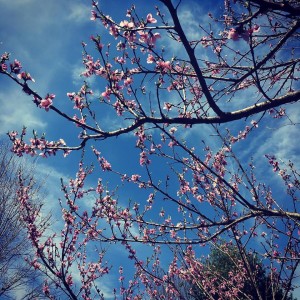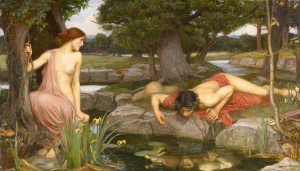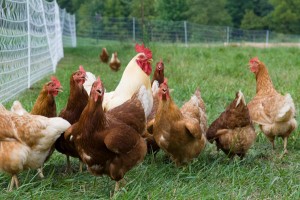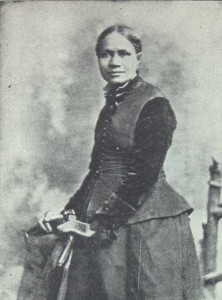Kindles in the cool grass,
and the night builds hoarfrost
like small cities of glass.
Dawn will spill across
these scattered
shadows leaves of light.
A hummingbird
will sip a bluebell flute
of dew and go on burning.
Grass blade, feather blur,
light, everything —
we are all a kind of fire.
 Michael Johnson is currently living in Okanagon Falls, Ontario. His work has appeared in the Fiddlehead, Queen’s Quarterly, Weber Studies, The Best American Poetry and The Best Canadian Poetry anthologies. He is from Bella Coola, British Columbia and currently works as a wine consultant at a vineyard in Ontario.
Michael Johnson is currently living in Okanagon Falls, Ontario. His work has appeared in the Fiddlehead, Queen’s Quarterly, Weber Studies, The Best American Poetry and The Best Canadian Poetry anthologies. He is from Bella Coola, British Columbia and currently works as a wine consultant at a vineyard in Ontario.
“I…a universe of atoms, an atom in the universe.” This quote was originally spoken by 20th century theoretical physicist Richard P. Feynman. Though this quote covers a much broader scope (the entire universe) than Michael Johnson does in “Dew,” the ideas behind both the quote and the poem are similar. “Dew” is about finding meaning and information from the world around us. Something as small as a dewdrop on a blade of grass can contain an entire metaphorical “city of glass.” Johnson is looking at how we can extract magic and power from small details in life, just as the hummingbird is extracting sustenance from its “bluebell flute.” Each detail of nature and life in “Dew” reminds us that we are all an insignificant component of an intense, massive story; it also shows us that there is an intense, massive story happening within us at any given moment. This message is both profoundly humbling and encouraging. We are not the center of the story of life, but he drives home the major takeaway in the last line: “we are all a kind of fire.” It is our job to bring that fire to life and use it.
Johnson supplements the deeper subplot here with a lighter sensory theme: lovely, breezy weather on a spring morning. We can all remember the way glass cities of dew look when they rest on a freshly cut lawn or in a wild meadow outside the city limits. We know the sunrise he describes in the second stanza: the one that slowly and gradually envelopes the skyline, and seems to suck away each lingering shadow one by one. The image of the dignified hummingbird “sipping” on dew like champagne out of a vibrant flower conjures ideas of the “springtime elite,” members of nature who rules the time of the year when the weather is finally bearable again. And the last stanza walks us through opposing ideals that begin to live in harmony again when winter thaws: sharp blades of grass provide a contrast to soft “feather blurs,” and dew is foiled by the light and fire that exists in all of us.
 This poem, if nothing else, has encouraged me to simply get out more. I often take for granted the beauty and freshness of the nature surrounding me here in Rockbridge County. Additionally, in the age of Instagram and iPhone editing apps, I definitely fall into the trap of only being impressed by a large, grandiose display by nature. Only the brightest, most magnificent scenes catch any attention: sunsets, wildflowers, waterfalls. But Michael Johnson has reminded me of a crucial detail I often forget: something as small as a dewdrop can contain a city’s worth of beauty.
This poem, if nothing else, has encouraged me to simply get out more. I often take for granted the beauty and freshness of the nature surrounding me here in Rockbridge County. Additionally, in the age of Instagram and iPhone editing apps, I definitely fall into the trap of only being impressed by a large, grandiose display by nature. Only the brightest, most magnificent scenes catch any attention: sunsets, wildflowers, waterfalls. But Michael Johnson has reminded me of a crucial detail I often forget: something as small as a dewdrop can contain a city’s worth of beauty.
To read more from Michael Johnson, you can read his piece about poetry itself in The Best Canadian Poetry here: http://www.bestcanadianpoetry.com/2011/03/what-is-poetry.html
Featured image retrieved from http://winteryknight.com/tag/hummingbird/
Posted by Mansie Hough







